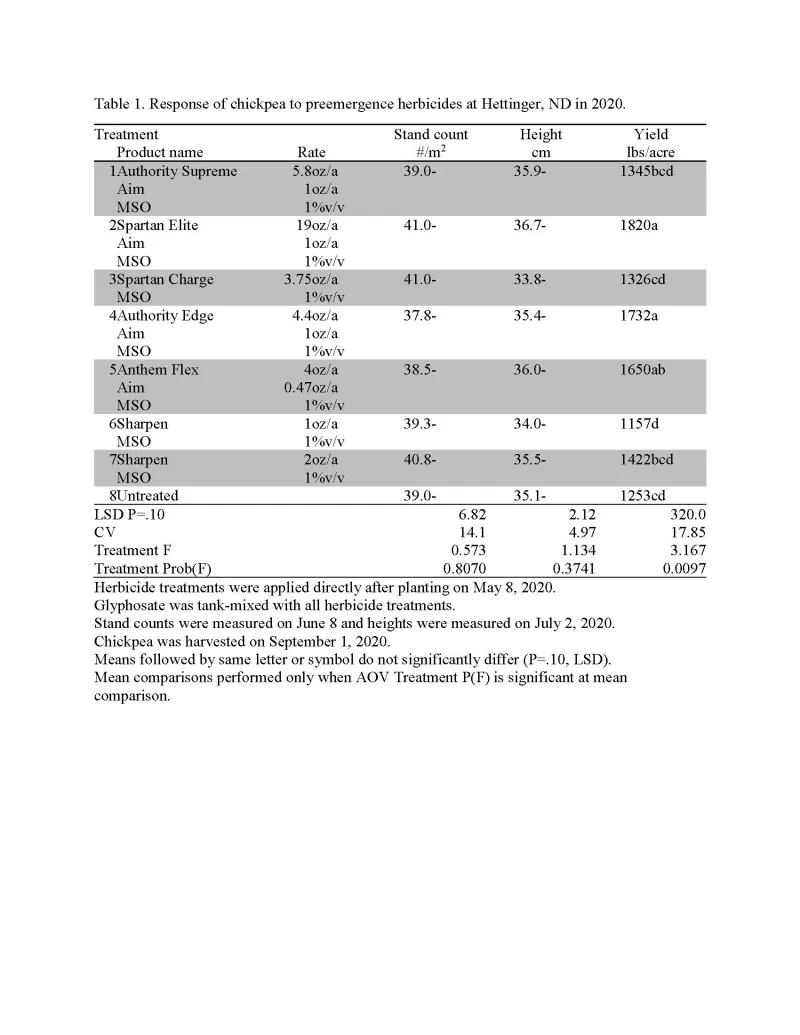Caleb Dalley and Daniel Abe
Hettinger Research Extension Center
A trial was conducted to evaluate chickpea response to various preemergence herbicide combinations. Chickpea was planted at a rate of 40 seeds per m2 (174,000 seeds per acre) into wheat stubble on May 8, 2020, using a no-till drill. After planting, herbicide treatments were applied using a tractor mounted research sprayer at a spray volume of 10 gallons per acre using 8002XP flat fan nozzles. All preemergence herbicide treatments were tank-mixed with glyphosate (Roundup PowerMAX at 22 oz/A plus AMS at 8.5 lb/100 gallons) to control weeds that had emerged prior to planting.
Due to lack of rainfall during the months of May and June, few weeds emerged with the crop and weed control could not be evaluated. Chickpea stand counts were measured on June 8 (2 weeks after chickpea emergence) using two 0.5 m2 quadrats per plot. No differences in chickpea stand was observed due to herbicide treatment. Chickpea height was measured (10 random plants per plot) on July 2. No differences in chickpea height was observed due to herbicide treatment. Chickpea were harvested on September 1 using a small plot combine (Kincaid XP). Three of the seven treatments yielded greater than the untreated control with the highest yield (1820 lbs/acre) following application of sulfentrazone plus metolachlor (Spartan Elite). Chickpea yield was also greater than in the control following application of sulfentrazone plus pyroxasulfone (Authority Edge) and carfentrazone plus pyroxasulfone (Anthem Flex). Due to dry conditions in the seven weeks following planting, herbicide activation was less than ideal. Rainfall that occurred during the last week of June and the first week of July resulted in emergence of green foxtail in plots where no preemergence grass herbicide was applied.
